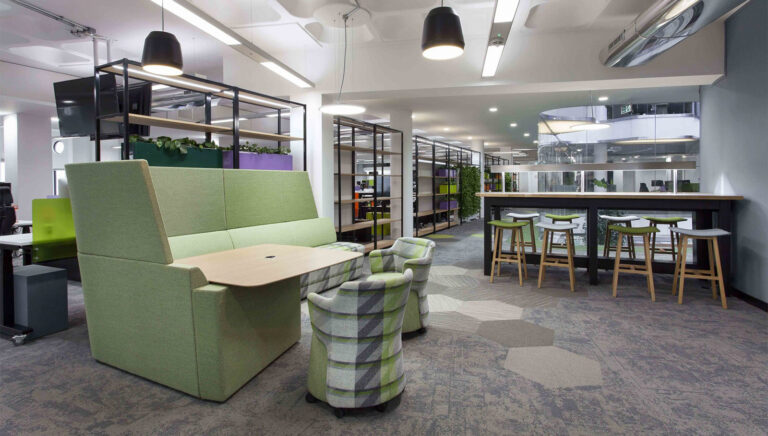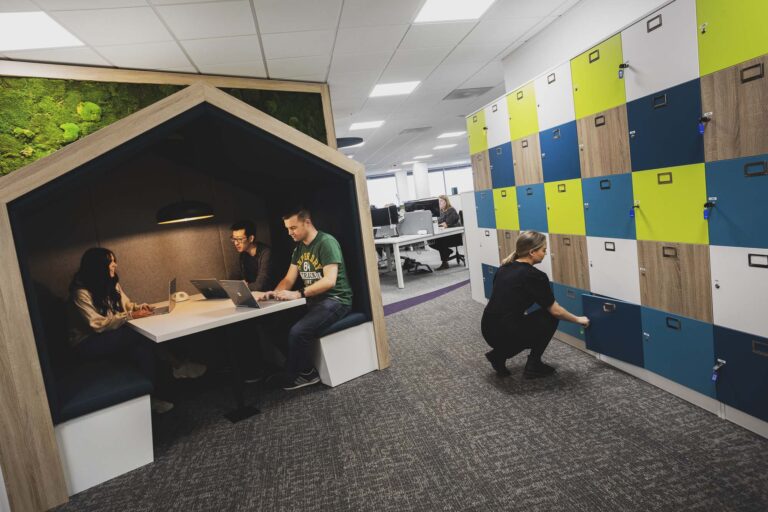
Striking the Balance: Collaboration and Concentration.
Date
28 July 2020
Read length
5 min
Despite productivity growing in the last quarter of 2017, the UK is still feeling the aftershocks of 2008 when UK productivity growth was the second lowest of the G7.
Despite productivity growing in the last quarter of 2017, the UK is still feeling the aftershocks of 2008 when UK productivity growth was the second lowest of the G7. Since then, increases in productivity have been achieved by increasing the hours we work, not by working smarter.
We are at a tipping point. The way many of us work is affecting our productivity and creativity, not to mention our health and wellbeing too. The upshot is a workforce with low levels of wellbeing, increased levels of stress, increased absenteeism and lower engagement. Work related stress is now the second most common health problem in Europe.
Enlightened organisations are now looking at where realignments can be made to technology, the working environment, protocols and processes in order to better support employees’ needs. The proven link between a healthy, engaged workforce and performance is a driving force behind this rethink and organisations are increasingly looking to create workplaces that respond to the elemental needs of the individual.
Collaboration and concentration are the two most critical requisites of today’s workers, although the workplace conversation is so imbalanced that you’d be forgiven for thinking it’s all about the latter not the former. Seventy one per cent of respondents in our 2017 survey put interaction with colleagues in their top five most important activities and 45% said concentration, quiet space and desk-based working were amongst their biggest concerns. The challenge for employers lies in striking the balance between these two components to ensure a cohesive workplace environment that caters for an array of working styles and tasks.
In order to provide a comprehensive workspace which caters for both collaborative and concentration settings, many organisations are now reviewing the efficiency of their existing facilities. With traditional desk space vacant 40% of the time, there is a clear opportunity to turn under-used space into the facilities that employees crave, with only minimal impact on property costs.
The zeitgeist of collaboration.
Collaboration is the modern workplace zeitgeist and everyone is talking about it. The expectation of regular, meaningful and productive employee collaboration has grown over the last decade and for knowledge economy businesses in particular, it’s now almost on a par with the value of individual endeavour.
However, effective collaboration is about more than being in meetings. It is about acknowledging a diverse range of work styles with different technical and environmental needs. While workplace collaboration traditionally refers to a physical gathering of people in one space, it is now just as likely to be a virtual gathering, with employees based in multiple locations using either audio or video conferencing and filesharing technologies to come together.
Dynamic in their design, use of technology and type, today’s collaborative work settings comprise soft seating informal spaces for relaxed team catch-ups, tech-integrated huddle spaces for real-time team-based working, acoustically private plug-and-play meeting pods and booths for enhanced focus and meeting rooms of all sizes and configurations for more formal presentations, file-sharing and video conferencing.
It’s interesting to note that modern collaboration is not confined to within an organisation either. The advent of coworking spaces has helped companies see and experience the benefit of collaboration with other external and third party professionals. Businesses are increasingly supplementing their own talent pool with gig-consultants and symbiotic micro businesses. These shared environments provide a flexible alternative to fixed lease office space and act as a hotbed for diverse talents and business connections to flourish.
Not forgetting concentration.
The down side of the focus on greater collaboration and socialisation is that the crucial importance of solitary and ‘private’ work is often overlooked. Concentration has a very important place in today’s workplaces. Concentration impairment can reduce workplace and job satisfaction and increase feelings of emotional and mental fatigue. Inevitably, the knock- on effects are poorer quality work and more errors.
With so much mobility, technology and collaboration comes noise and distraction. Quality ‘head-down’ space with minimal noise and disruption is key to the process of deep concentration and creative thought. This forms a vital part of a dynamic workplace that offers different spaces and might include no-tech areas, phone booths to mitigate noise transfer and single pods for lone-working and privacy.
There is some disparity though. Our 2017 research has shown that head down working is in the top five most important activities for employees, yet it is the second least supported activity by employers. Privacy and the ability to make confidential phone calls also appears in the top five most unsupported activities. While most businesses recognise that the working day comprises a blend of employees working alone as well as with colleagues, these figures suggest that many are still failing to put enough focus and spend against concentration; a mistake that will almost certainly costing productivity and in time workforce wellbeing too.
Variety is valuable.
Thanks to mobile technology freeing us from fixed place working, the modern act of work has changed. The workforce is now more agile and in search of variety and stimulus. As a result, it’s become necessary to understand how employees go about their work and to give them a variety of facilities, tools and spaces in order to thrive – from formal meeting rooms to quiet lone working pods and huddle spaces for impromptu gatherings.
Determining the right facilities for an organisation is best achieved with a workplace assessment and audit to understand workflows and behaviours as well as space utilisation. Employees should not be expected to work on sensitive, detailed work in the middle of a noisy and lively space. Nor should they be expected to carry out team work in cramped meeting rooms or gathered around someone’s laptop. An accurate and data-rich picture of an organisation’s needs provides the foundation for a workplace that works – whether it’s for concentrating, collaborating or something in between.
Workplace collaboration may attract the column inches, but the truth is that it is no more or less important than any other work style. The best workplace environments use an activity-based approach and bring it all together into one cohesive environment that supports productivity and wellbeing. In the battle of collaboration and concentration – there are no winners. It’s all about striking the balance.
See how we could help with your new office interior design or office design and build project here
Get in touch
We love nothing better than talking all things workplace and design – got a question, potential project or just need some guidance?
Drop us a note…



